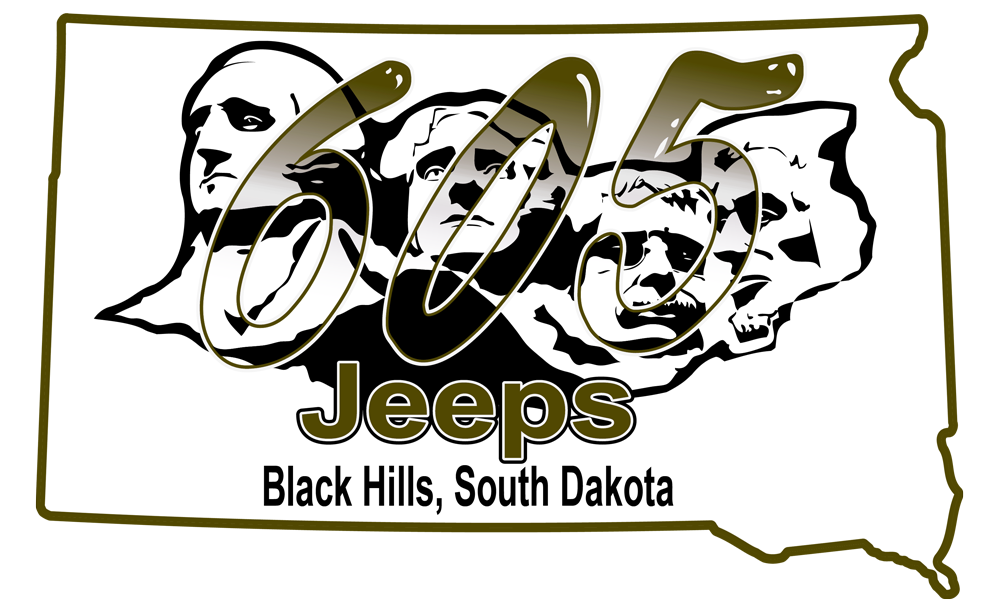Recovery gear is arguably the most important items in your Jeep. A good recovery kit can save you a long day on the trail, or even a long walk home. Below are some of the most common pieces of gear and what they are used for.
Tow ropes: a tow rope is the most basic piece of recovery gear. They come in many different widths and lengths, but the best size for a Jeep is a 3in x 20ft rope. A 20ft x 3in rope has a load rating of 30,000 lbs. They are extremely affordable and can be found at local hardware stores, Walmart, and of course Amazon. Tow ropes are designed to stretch a few inches before they begin to pull the vehicles. This stretch creates more momentum and therefore pulling power. Tow ropes attach to the Jeep on a tow hook, a d-ring, or soft shackle. No off roader should hit the trail without a tow rope in their rig.
Shackles: shackles come in 2 types: d-rings and soft shackles. Shackles are used for making connections between vehicles and recovery gear. A 7/8s metal d-ring has a load rating of around 19,000 lbs and is the most common choice for off road vehicles. Metal d-rings can pose a safety risk in the event of a failure, creating dangerous flying debris. This is the reason the soft shackle was invented. Soft shackles are made from high-modulus polyethylene rope (commonly referred to as Dyneema), the same material soft rope winches are made from. This material is lightweight, extremely strong, and most shackles have a load rating of approximately 8,000 to 15,000 lbs. Soft shackles are becoming extremely since they are considerably safer than d-rings and are much lighter.
Winches: A winch is an extremely useful piece of equipment. They can be used to self-recover, assist other vehicles, and remove objects from the trail (rocks and trees). Winches come in many different sizes, so it is important to consider the weight of your vehicle when choosing a winch. It is recommended to choose a winch that has a load rating of at least 1.5x the vehicles weight. For example, a typical Wrangler 2 door weighs around 4,500 lbs, so an 8,000 lb winch would be sufficient. Most 4 door Wranglers use a 10,000 lb winch. Winches are offered with steel cables or soft ropes. Soft ropes are generally a better choice because they are significantly lighter and are considered safer.
Gloves: gloves are a commonly overlooked piece of equipment that will save your hands from injury. Metal winch cables have splinters that can cut you wide open when handling. Gloves also protect you from pinches and smashes, ect.
Tree Savers: tree savers are straps that are designed to wrap around a tree. They are typically 6-9 ft long and approximately 4 inches wide. The tree saver protects the bark on a tree by providing a large and soft surface to spread out the load. If a winch cable is wrapped around a tree without a tree saver the cable can cut deeply into the tree, permanently damaging it. Remember, tread lightly!
Jack: jacks are extremely important since they allow you to change a tire. There are 4 types of jacks: factory jacks, high lift jacks, bottle jacks, and offroad jacks. Most factory jacks will work on lifted Jeeps, but Jeeps lifted over 2 inches should consider a boosting block. High lift jacks are useful for getting a vehicle through an obstacle and can be used to change a tire; however, they are extremely unstable and every effort to prevent the vehicle from falling over should be taken if using a high lift jack for a tire change. Bottle jacks are a great addition to a vehicle that has been lifted over factory height. They are stable, strong, and come in a compact package. There are several types of off-road jack, and they all have their advantages and disadvantages. The most common being space and weight. Regardless of what type, a jack is essential.
There are many more types of recovery gear out there, but the above list is what I consider to be essential. I never hit the trail without my recovery kit. I can’t even begin to count the times I have used my winch to recover myself or someone else, even on simple trails. Lastly, don’t forget to inspect your gear from time to time. Be safe out there!


Recent Comments